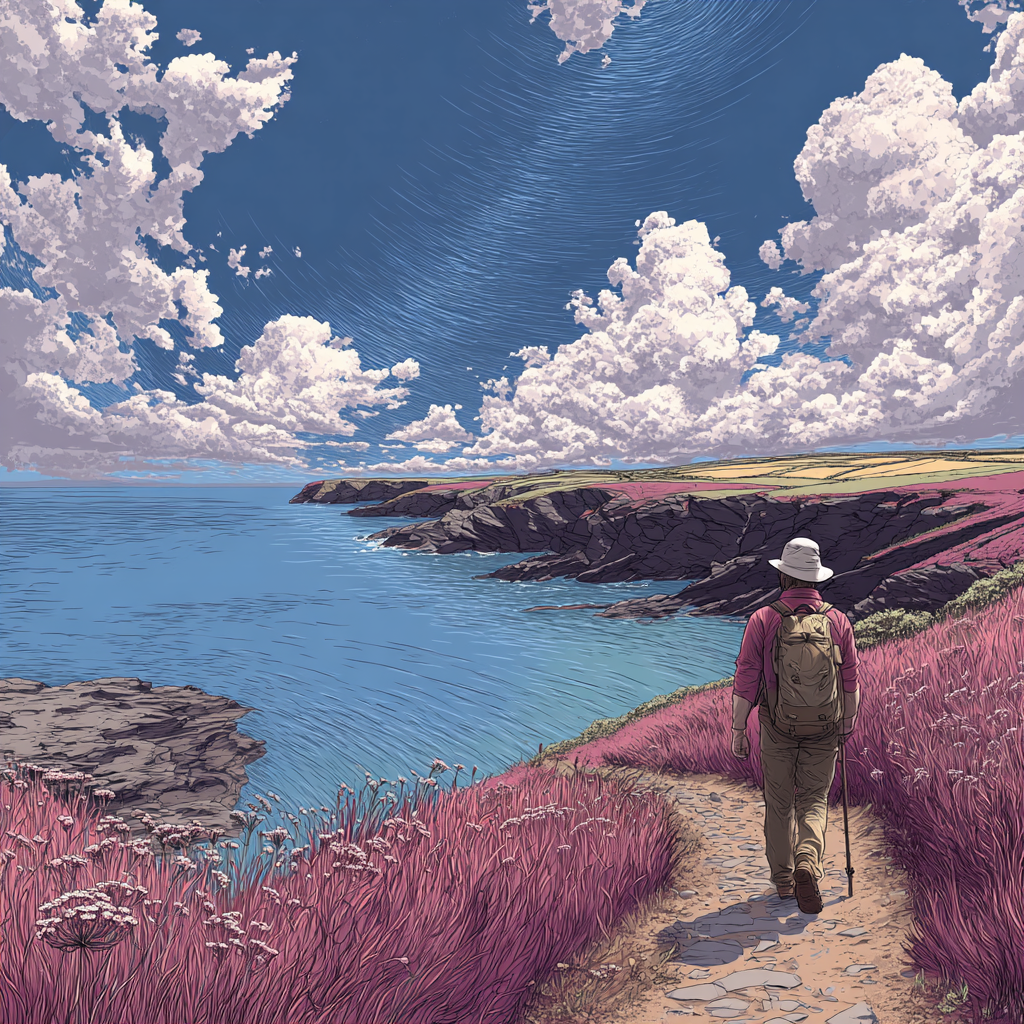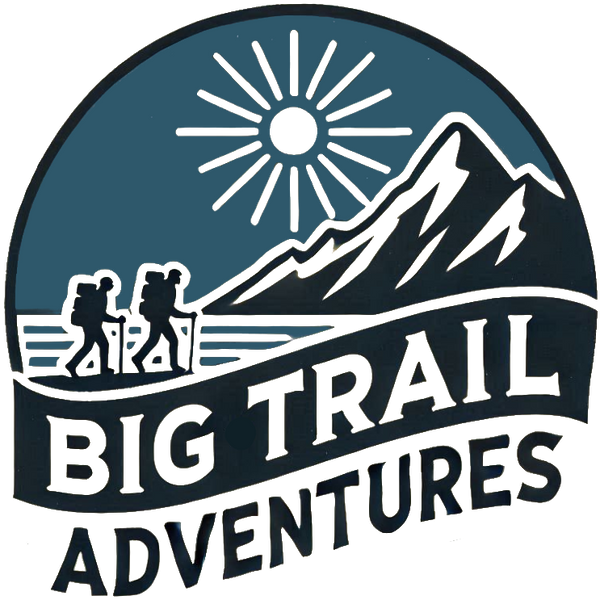
Update Blisters, Joy, and a Three-Legged Dog: Martyn Howe on Britain’s National Trails
Share
Today I’m joined by Martyn Howe, author of Tales from the Big Trails. Martyn has walked every one of the UK’s National Trails — from the South West Coast Path to the Pennine Way and beyond. We talk about the rhythm of life on trail, the joy (and hardship) of long journeys, memorable encounters (including a three-legged dog), and how walking has shaped Martyn’s writing. He also shares a glimpse of his next project, The Coast is Our Compass.
From “a list of trails” to one evolving journey
“For me, the draw was simple: National Trails pass through our finest landscapes. I didn’t have to agonise over where to walk — I just followed the acorn (or the thistle in Scotland). It didn’t start as a checklist, but it became a single journey because I loved everything the National Trails stood for. That acorn symbol began to feel like a thread connecting the whole adventure.”
“At Cromer, I thought I’d seen my last acorn — then another pointed along the England Coast Path. It turned out I hadn’t ‘finished’ after all. Those little black waymark plates became surprisingly meaningful.”
The rhythm of trail life
“People say around 10 days in, trail life becomes your new normal. You wake from your tent, make food, walk, meet people, sleep — repeat. It empties the mind of work and noise. Your ego gets stripped back; you’re more open to people and places. It fills your head with something new, and I find that very powerful.”
Why make the compromises to go?
“I remember a Pennine Way evening: a trig at sunset, a youth hostel in the valley, legs wrecked after 25 miles — and suddenly I was overtaken by joy. It’s rare, almost hallucinatory: achievement, weather, fitness, state of mind — everything aligns. Those moments are addictive; once you feel it, you want to find it again.”
Confidence wobbles, injuries, and homesickness
“Injuries bite harder as you age. Shin splints (once), blisters (inevitable) — I’ve learned to prevent and manage them. But I’ve never truly wanted to quit. Homesickness does creep in; my wife knows the triggers. My cure? Keep moving for half an hour — the feeling usually passes. The trail often provides: you meet someone, walk together, and your head resets. Resilience matters.”
Blister prevention (the practical bit)
“Prevention beats cure. At the first hot spot, stop and tape it (I use Hypafix). But also find the root cause. After gait analysis, a physio told me my stiff hips were making my feet ‘duck out’, changing foot strike and causing blisters. Working on hip mobility reduced them hugely. Don’t just ‘man up’ — treat it, clean it, and if it’s bad, stop walking.”
Tech then vs. now
“I started with a paper map, a candy-bar phone, and a notebook. Now: digital maps, booking apps, everything in one handset. It’s brilliant for logistics — and maybe too good. Modern tech can set expectations (Instagram sunsets!) and blunt serendipity. My rule now: airplane mode when I walk; phone for maps and photos only. I do miss the old map-and-compass days.”
Building immersive maps
“Maps take you somewhere new because you see context. With an IT/GIS background, I’m building immersive digital maps for the English coast — layering art, culture, nature, geology, industry, bird reserves, MPAs, coastal margins — to show how everything relates. It supports my writing and scratches a long-term mapping itch.”
Explore: trailplanner.co.uk (also via linktr.ee/trailplanner)
Trails that surprised him
“The Southern Upland Way felt wilder and more remote than I expected: coast-to-coast, bodies, tough and rewarding. I also love the Yorkshire Wolds Way and how it links into the Cleveland Way — that coast + moorland escarpment contrast is fantastic. Ask me next month and I might pick another!”
Nights out: hostels, bothies, tents… and everything else
“Some Pembrokeshire hostels are sublime — sole use of a dorm with a bay window over the sea. I’ve had glorious wild camps, great campsites, comfy hotels where I felt like a vagabond, and the odd asylum hotelby accident — eye-opening for understanding the social spectrum along the coast. You step into communities for a night; it’s part of the learning.”
Characters on the path (including a three-legged dog)
“On the Pennine Way I met the happiest three-legged dog bounding along, owner beaming behind. If that dog can delight in the day, what’s my excuse? I’ve chatted with everyone from homeless hikers to hedge-fund managers, even a former Premier League striker who told me his life story. On trail, the labels fall away — it’s just two people walking.”
The new book: The Coast is Our Compass
“I’ve finished the author’s draft of a book about walking the (King Charles III) England Coast Path: The Coast is Our Compass. It’s deeper and more philosophical — art, wildlife, coastal erosion, nuclear power, avian flu, migrant crossings — and how the coast changed me. Not just the outer journey, but the inner one: we don’t see things as they are; we see things as we are.”
What he hopes readers take away:
A richer sense of why the coast matters and an invitation to walk with him — to witness what’s really happening at the edge of the land, and to notice how the act of walking changes what we see.
Why he writes
“Walking is slow enough that your mind stores the experience. Writing is how you process it. Reading helps you retain, but writing helps you truly understand. Putting days — or months — onto the page re-makes the journey inside you.”
Quickfire
-
Trail shoes or boots? Dry = trail shoes (non-Gore-Tex drain and dry fast). Wet/rocky mountains = boots.
-
Early start or late finish? Early. Ten miles by 10 a.m., golden light, birdsong, and empty paths.
-
Most beloved bit of kit? A well-lived-in tent that refuses to die after hundreds of nights.
-
One trail to walk again tomorrow? Pembrokeshire Coast Path — where it all began.
-
Advice for a first trail? “Distance is nothing; only the first step is difficult.” Start easy, pick a route with bail-outs (rail/bus), and **go.”
